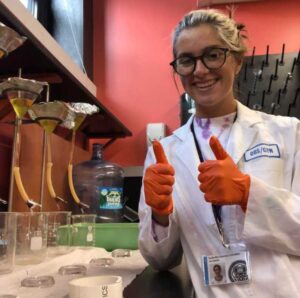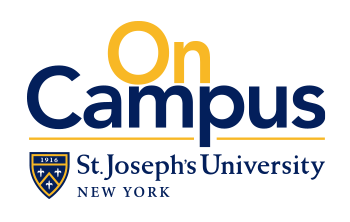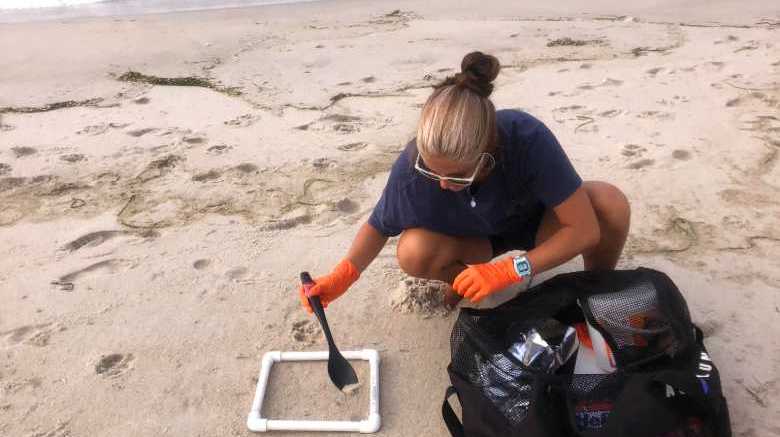Hands-on summer research projects led two SJC Long Island biology adolescent education majors to present thesis research projects at the recent New York Chapter of the American Fisheries Society’s Annual Meeting.
Mackenzie Minder of Hauppauge and Isabella Colombo of Sayville — both seniors and expected to graduate in May — actually kicked off their research projects in January 2021, then conducted experiments last summer.
Colombo investigated the presence of microplastics in beach sediment. After commencing her research during the winter, she collected samples on Fire Island beaches over the summer and carried out experiments.
Her research, the first of its kind on Fire Island, determined that the most abundant form of microplastics were fibers, possibly from common beach products, such as towels, beach bags and clothing.
If not contained, this pollution in sediment can negatively affect vertebrates and invertebrates which typically live on the seafloor. (Note: these microplastic samples are still being processed for verification by Stony Brook University’s NARMIL Laboratory).
Minder presented research that involved microplastics in the Eastern oyster (Crassostrea virginica) on Long Island. She first collected articles and background information, then later conducted experiments and verified with the help of Stony Brook University’s NARMIL Laboratory that there were five confirmed types of plastic particles found in the oysters tested from the North and South shores of Long Island (out of the 48 oysters in total sampled).
It was not enough data to be statistically analyzed, but they were able to analyze the samples qualitatively. Minder is still awaiting results from an experiment she conducted to see if washing the oyster flesh had any effect on the microplastic concentrations.
“I drove to different areas of Long Island to collect oysters from local fish markets, and then processed and analyzed them at SJC’s biology labs,” Minder said. “I had help from many people at SJC, who helped me reach my full potential with this research project.”
With financial support from the SJC Faculty Development Small Grant Committee, and under the supervision of their thesis and academic adviser Konstantine Rountos, Ph.D., associate professor of biology, Minder and Colombo conducted their research, which aligned with the broader research goals of SJC’s biology labs, aimed at assessing contaminants in local aquatic ecosystems.

SJC Long Island student Isabella Colombo.

SJC Long Island student Mackenzie Minder.
“During the course of their research projects, Isabella and Mackenzie have grown tremendously as both biologists and scholars,” Dr. Rountos said. “It took a great deal of determination and perseverance to see their projects through.
“Their research is local and impactful, providing crucial information about the levels of microplastics in our local beaches and shellfish, respectively,” he added.
Both students plan to attend graduate school to pursue master’s degrees in special education. They plan to become certified to teach biology and chemistry.
“It was really humbling to present my research at this regional conference,” Colombo said. “We could never have imagined how far our research would take us. It was great to have individuals of this scientific community share their ideas because we all share the commonality of having a passion for the sciences. I was honored to represent St. Joseph’s College.”
Feature photo above: Isabella Colombo collects samples at a Fire Island beach.


